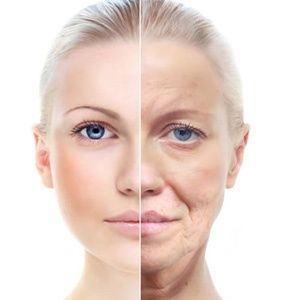What is aging and what are its main theories?

Genetic and external factors determine the aging process in an individual, which manifests itself in different ways in each person. The reactions that are generated occur at the molecular, cellular and organic levels, leading to a decline in health and finally to death.
Aging is an issue that worries most people, not only because of the emotional impact that the deterioration of their physical image can cause, but also because of all the repercussions it has on their health, since aging is characterized by being universal, irreversible and lethal.
But what is aging? As a general definition, we can say that it is the set of modifications that living beings undergo morphologically and physiologically, which develops gradually, as a result of the action of time and a multiplicity of factors. It is estimated that around 100 different genes are involved in this process.
The changes experienced at the molecular, cellular and organic levels increase the possibility of diseases, leading to the death of the individual.
In an attempt to explain the aging process -particularly in humans- several theories have emerged, which should be considered together.
Scientific theories
In principle, we have the stochastic category, which suggests that changes during aging occur randomly and are cumulative over time. Some of the theories it encompasses are the following:
- Free radical theory: this is perhaps the best known and most valid theory, which states that aging is the result of damage caused by free radicals in tissues.
- Pacemaker theory: proposes the immune and neuroendocrine systems as markers of the onset of aging. According to this theory, the detriment of both systems is genetically programmed to occur at specific times of life.
- Catastrophic error theory: assumes that, with age, errors arise in protein synthesis mechanisms, which cause the production of abnormal proteins until a loss of cellular homeostasis leads to death.
- Wear and tear theory: this theory states that the accumulation of damage in the vital parts of the organism leads to the death of cells, tissues, organs and, finally, of the individual.
- Cross-linking theory: proposes a cross-linking between proteins and other cellular macromolecules, which determines aging due to the development of age-dependent diseases.
The second category represents non-stochastic theories, which suggest that aging is predetermined, the most important theory being genetics.
- Genetic theory: proposes that the genome acts as a kind of biological clock, responsible for programming the changes that will occur throughout life, from conception to aging.
External Factors
According to data from the World Population Ageing 2020 report, published by the United Nation (UN), last year there were 727 million people over the age of 65 in the world; however, in the next three decades, that number will double, reaching more than 1.5 billion by 2050. The world’s elderly population is expected to increase from 9.3% in 2020 to 16% in 2050.
In this sense, old age is a destiny that we all want to avoid, but at the same time we aspire to reach, therefore, it is important to know the factors that encourage aging, as well as those that can delay it. Several studies have pointed out that lifestyle is a determining factor in this process:
- Physical activity, for example, is associated with longevity and a better quality of life in adulthood; it also helps prevent chronic diseases such as diabetes, hypertension, osteoporosis and cardiovascular diseases.
- On the other hand, tobacco and alcohol are risk factors for many diseases and are associated with increased inflammation and oxidation of the body.
- Meanwhile, a diet rich in antioxidants is beneficial because they help neutralize the oxidizing action of free radicals.
- Moreover, repeated exposure to polluted air alters the body and the immune system.
- Let us remember that a weakened immune system increases the risk of infections, compromises the healing process and increases the mortality rate.
If you would like to learn more about our retirement savings plans, please contact an advisor.
















